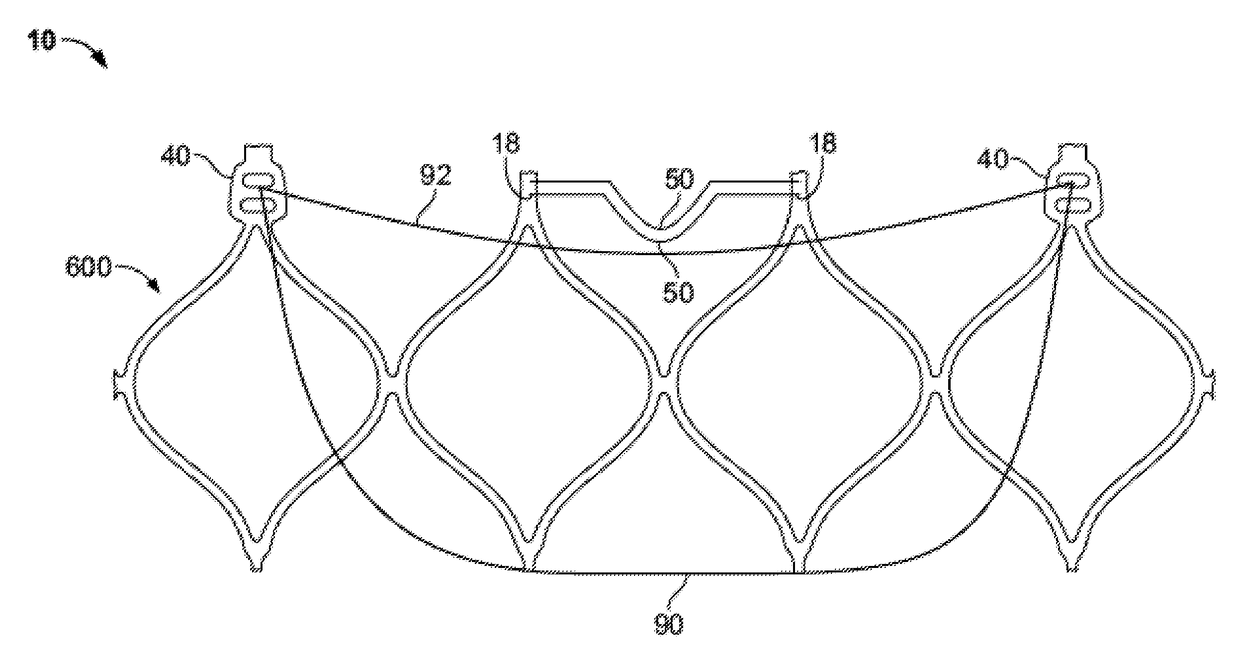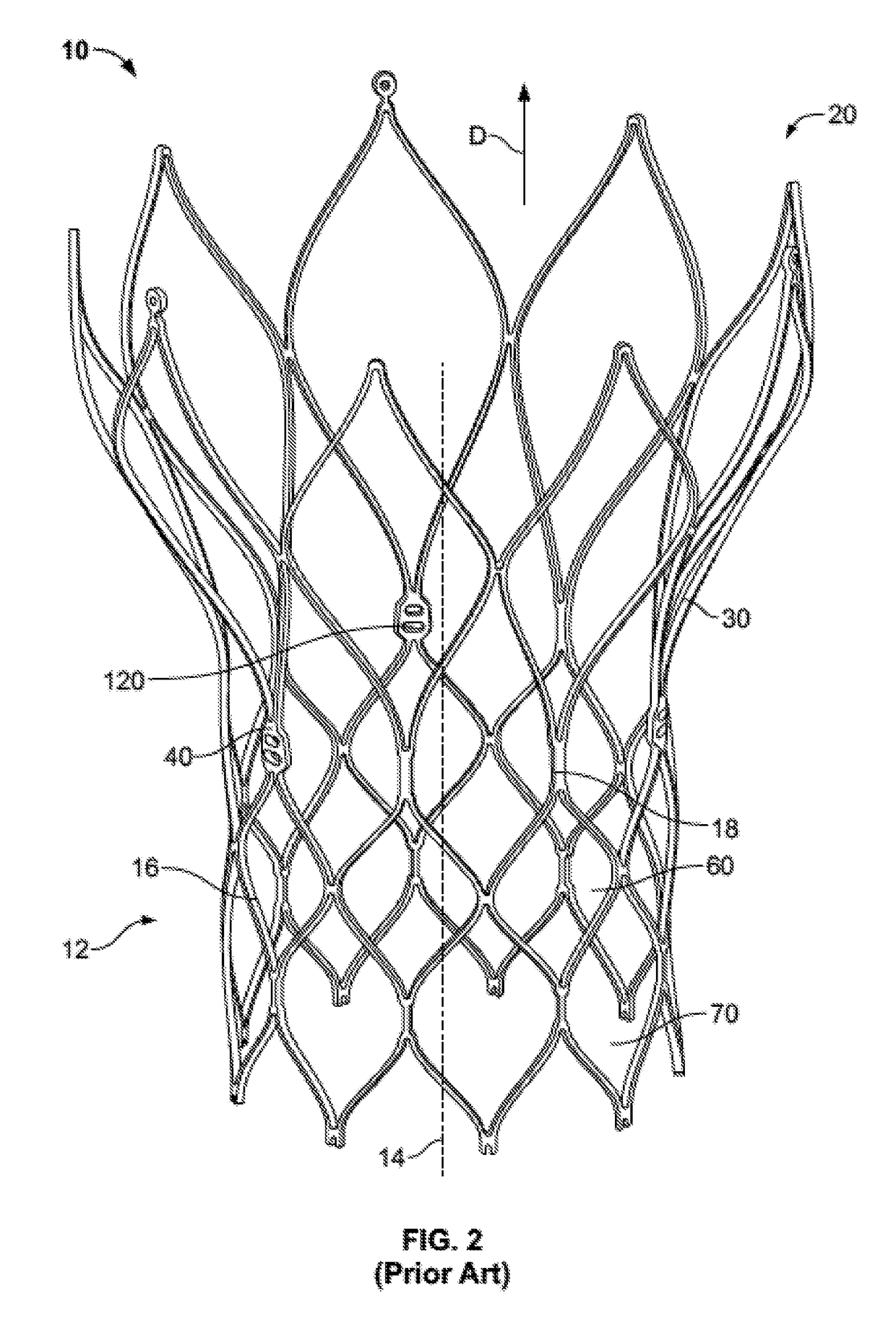Transcatheter valve stent anchors
a technology of transcatheter valve and stent body, which is applied in the field of prosthetic heart valves, can solve the problems of affecting the function of the mitral valve, affecting the design of the expandable stent body and valve, and disrupting the electrical conduction system
- Summary
- Abstract
- Description
- Claims
- Application Information
AI Technical Summary
Benefits of technology
Problems solved by technology
Method used
Image
Examples
Embodiment Construction
[0022]While the present invention will be described more fully hereinafter with reference to the accompanying drawings, in which particular embodiments of stents and methods of delivery are shown, it is to be understood at the outset that persons skilled in the art may modify the invention herein described while achieving the functions and results of this invention. Accordingly, the descriptions that follow are to be understood as illustrative and exemplary of specific structures, aspects and features within the broad scope of the present invention and not as limiting of such broad scope. Like numbers refer to similar features of like elements throughout.
[0023]FIG. 1 is a simplified view of the geometry or anatomy of the aortic root tissue in a typical human heart. The left ventricular outflow tract (LVOT) 1 communicates with the ascending aorta 5 through the annulus 2 of the native aortic valve and the Valsalva sinus 3. The sinus joins the aorta at the sinotubular junction (STJ) 4....
PUM
 Login to View More
Login to View More Abstract
Description
Claims
Application Information
 Login to View More
Login to View More - R&D
- Intellectual Property
- Life Sciences
- Materials
- Tech Scout
- Unparalleled Data Quality
- Higher Quality Content
- 60% Fewer Hallucinations
Browse by: Latest US Patents, China's latest patents, Technical Efficacy Thesaurus, Application Domain, Technology Topic, Popular Technical Reports.
© 2025 PatSnap. All rights reserved.Legal|Privacy policy|Modern Slavery Act Transparency Statement|Sitemap|About US| Contact US: help@patsnap.com



